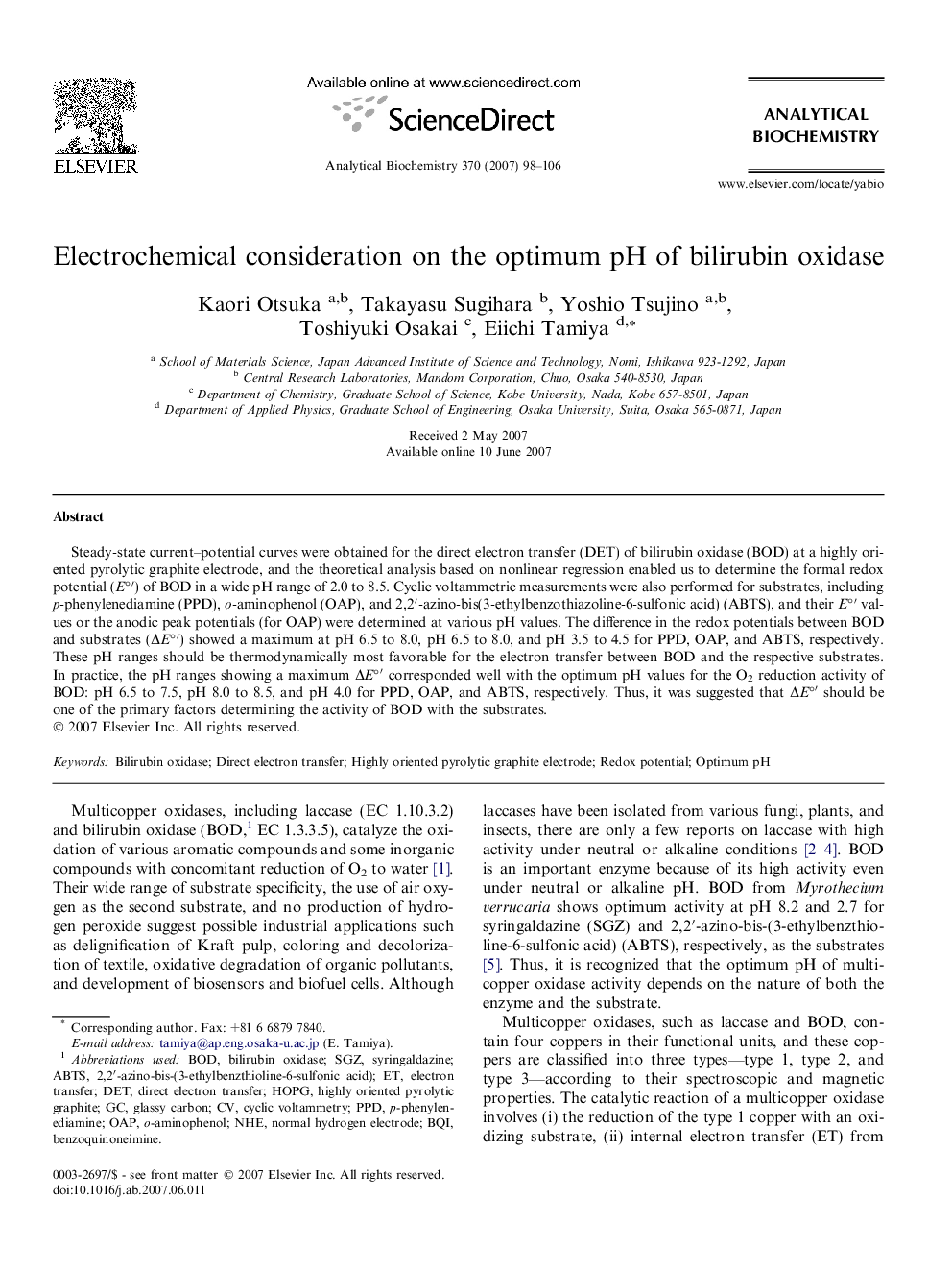| Article ID | Journal | Published Year | Pages | File Type |
|---|---|---|---|---|
| 1175153 | Analytical Biochemistry | 2007 | 9 Pages |
Steady-state current–potential curves were obtained for the direct electron transfer (DET) of bilirubin oxidase (BOD) at a highly oriented pyrolytic graphite electrode, and the theoretical analysis based on nonlinear regression enabled us to determine the formal redox potential (E°′) of BOD in a wide pH range of 2.0 to 8.5. Cyclic voltammetric measurements were also performed for substrates, including p-phenylenediamine (PPD), o-aminophenol (OAP), and 2,2′-azino-bis(3-ethylbenzothiazoline-6-sulfonic acid) (ABTS), and their E°′ values or the anodic peak potentials (for OAP) were determined at various pH values. The difference in the redox potentials between BOD and substrates (ΔE°′) showed a maximum at pH 6.5 to 8.0, pH 6.5 to 8.0, and pH 3.5 to 4.5 for PPD, OAP, and ABTS, respectively. These pH ranges should be thermodynamically most favorable for the electron transfer between BOD and the respective substrates. In practice, the pH ranges showing a maximum ΔE°′ corresponded well with the optimum pH values for the O2 reduction activity of BOD: pH 6.5 to 7.5, pH 8.0 to 8.5, and pH 4.0 for PPD, OAP, and ABTS, respectively. Thus, it was suggested that ΔE°′ should be one of the primary factors determining the activity of BOD with the substrates.
